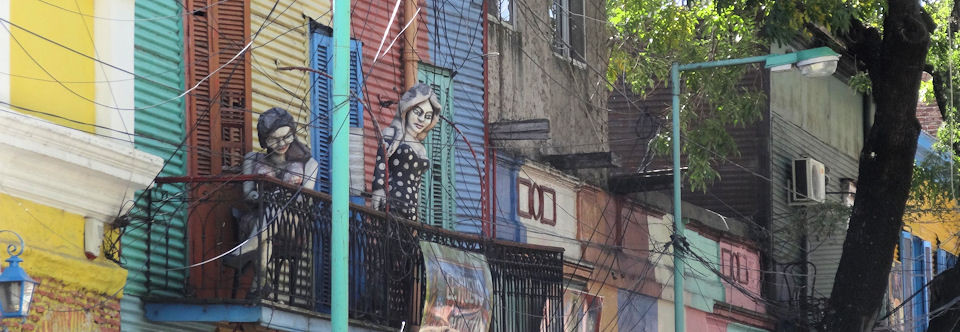This was where Pedro de Mendoza founded Buenos Aires in 1536 and it served as the initial port for the city before a better site with deeper waters was found to the north. For centuries it housed black slaves before immigrants from Europe began to settle in the area. When nations around the world were declaring their independence, La Boca also made a grab at nationhood, with its predominantly Genovese population declaring independence from Argentina in 1882. Naturally the process of self-determination was a peaceful transition with General Roca, the then president of Argentina and the guy with the biggest gun, rolled into La Boca and decided what was in everyone’s best interests. As Italian settlement increased in the late twentieth century, barrio La Boca began to take on the form it is famous for today. Among the many difficulties of an economically depressed neighbourhood, paint of the same colour didn’t always stretch to cover the entire building such that improvised colour matching was employed giving rise to the peculiar eye-candy that adorns tourist brochures: contrasting blocks of colour that compete for your attention. Cobbled streets and old French-style lamp posts, old houses sporting coloured shuttered windows all combine to add a unique charm to this portside suburb.
The touristic beating-heart is ‘Caminito’: a short winding walkway through brightly coloured houses, shanties that glare at you in blocks of colour. Take the 152 from Recoleta and get off were it turns around. Walk several hundred meters until you find yourself surrounded by tourists.
Caminito
It is charming. Here are people who had very little but who made their shanty-town bearable with colour. No one remembers the moneyed districts of steel and glass and rubbish removal – they’re kind of regarded subconsciously as a necessary evil. Struggle and turmoil and longing are always expressed through art, dance and even architecture to a certain degree. They are rarely celebrated in their time but they end up being what gives a city its character. People with insane amounts of money collect art, perhaps not because they understand or appreciate its message, but because others do and these people want to be seen to have what other people love and understand, but could never buy.
Surrounding Streets
Sure it’s kitschy, sure it’s ampted, sure it’s overpriced – but La Boca speaks a truth about the history of Buenos Aires. I would recommend straying from the path. One needn’t stray far before the streets are practically deserted presenting many opportunities to snapture, and if you’re hungry, you can always return for a feed and tango show.















